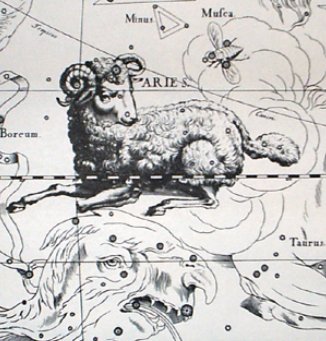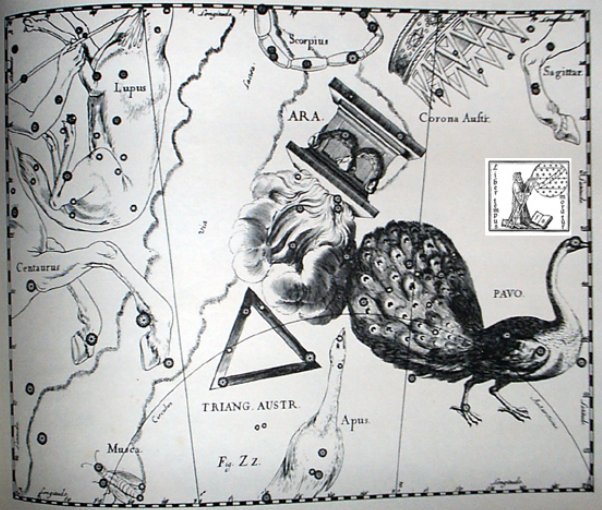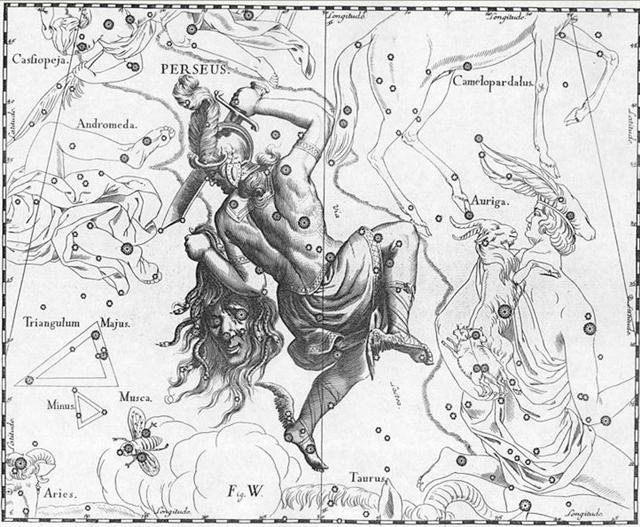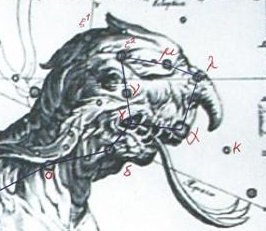253. The fate of Captain Cook
can perhaps be used to illustrate what
happened in early 'February' in the year 3112 BC and below
I have used dates in tune with the statement
that Hun-Nal-Ye (or at least his
head) entered the Tree 542 days after the
first 3-stone place in 21 May:
|
Itzam-Yeh
defeated |
28 May
(148),
3149 BC |
|
First
3-stone place |
21 May
(141),
3114 BC |
|
Creation of our present
world |
13 Aug
(225), 3114 BC |
|
Hun-Nal-Ye became the
sky |
5 Febr
(36), 3112 BC
|
|
(3149 - 3112) / 71 =
0.52 < (26.6 - 26) |
|
21 May, 3114 BC - 13
August, 3114 BC = 225 -
141 = 84 (= 12 * 7)
21 May, 3114 BC - 5
February, 3112 BC = 542,
which 'happens to be'
the sum of 365 days and
6 * 29½ nights. |
|
148 (May
28) - *70 = 78 (19
March) |
 |
365 |
 |
 |
174 |
 |
|
Ca4-12 (88) |
Cb3-13 (454) |
Cb3-14 (63) |
Cb10-8 (630) |
|
BETELGEUZE |
BETELGEUZE |
tagata - hanau
hia |
kua pu |
|
21 May (141) |
177 = 3 * 59 |
|
542 = 365 + 177 |
|
(= 300 + 242 = 8 * 59 - 70 = 401 +
141 = 260 + 2 * 141) |
... Cook's first visit, to
Kaua'i Island in January 1778,
fell within the traditional
months of the New Year rite (Makahiki).
He returned to the Islands late
in the same year, very near the
recommencement of the Makahiki
ceremonies. Arriving now off
northern Maui, Cook proceeded to
make a grand circumnavigation of
Hawai'i Island in the prescribed
clockwise direction of Lono's
yearly procession, to land at
the temple in Kealakekua Bay
where Lono begins and ends his
own circuit. The British captain
took his leave in early February
1779, almost precisely on the
day the Makahiki ceremonies
closed. But on his way out to
Kahiki, the Resolution sprung a
mast, and Cook committed the
ritual fault of returning
unexpectedly and unintelligibly.
The Great Navigator was now
hors catégorie, a dangerous
condition as Leach and Douglas
have taught us, and within a few
days he was really dead - though
certain priests of Lono did
afterward ask when he would come
back ...
|
29 Jan |
30 |
31 |
1 Febr |
|
... Among the other ritual
coincidences, perhaps the most
remarkable was the death of poor
old Willie Watman, seaman A. B.,
on the morning of 1 February.
Watman was the first person
among Cook's people to die at
Kealakekua: on the ceremonial
day, so far as can be
calculated, that the King's
living god Kahoali'i would
swallow the eye of the first
human sacrifice of the New Year.
And it was the Hawaiian chief -
or by one account, the King
himself - who specifically
requested that old Watman be
buried at Hikiau temple. |
 |
 |
 |
 |
|
Cb10-1 (392 + 6 + 225 ) |
Cb10-2 (624) |
Cb10-3 (233 = 625 - 392) |
Cb10-4 |
|
Ku hakaraoa -
te inoino |
hakarava |
te inoino |
ku hakaraoa |
|
Raoa.
Pau.: To
choke on a fishbone.
Mgv.: roa, a bone
stuck in the throat.
Ta.: raoa, to
choke on a bone. Sa.:
laoa, to have
something lodged in the
throat. Ma.: raoa,
to be choked. Churchill. |
|
|
ALMAAZ (He Goat) = ε Aurigae
(74.7),
HAEDUS I = ζ Aurigae
(74.8) |
HAEDUS II = η Aurigae
(75.9) |
5h (76.1)
ε Leporis (76.0),
CURSA = β Eridani
(76.4), λ Eridani (76.7) |
μ Aurigae, μ Leporis (77.6) |
|
no star listed (257) |
17h (258.7)
ARRAKIS =
μ Draconis (258.7) |
Mula-19 (The Root)
SABIK (The Preceding One) =
η Ophiuchi (259.7), η
Scorpii (259.9) |
NODUS I =
ζ Draconis (260.0), π
Herculis (260.7),
RAS ALGETHI
= α Herculis
(260.8) |
|
2
Febr (33) |
3 |
4 |
5
(36 = 177 - 141) |
|
Messrs. Cook and King read the
burial service, thus introducing
Christianity to the Sandwich
Islands, with the assistance however
of the high priest Ka'oo'oo and the
Lono 'brethren', who when the
English had finished proceeded to
make sacrifices and perform
ceremonies at the grave for three
days and nights. So in the early
hours of 4 February, Cook
sailed out of Kealakekua Bay, still
alive and well. The King, too, had
survived Lono's visit and
incorporated its tangible benefits,
such as iron adzes and daggers. In
principle, the King would now make
sacrifices to Kuu and reopen the
agricultural shrines of Lono. The
normal cosmic course would be
resumed. |
|
Notably 5 February (36) could
be regarded as a measure for the difference
between 3 * 59 (= 177) and 141 (the
day number for 21 May). 542 = 365 +
177, but 542 - 177 + 141 = 401 = 365
+ 36. Therefore the distance from
the first 3-stone place to the day
when Hun-Nal-Ye entered the Tree was
probably not 542 but in a way 141 days less
or 36 days more -
another time count was beginning in
day 401, in 5 February (36). |
|
Evidently the new time count began
in day 5 of February, i.e.
after 4 days when Ku(u)
had been
'choking on fishbones' - which can
be compared to the first 4 days on
side b, from the Front of the
Head of Ku(u) to the Back of
the Head of Ku(u):
 |
 |
 |
 |
|
Cb1-1 |
Cb1-2 |
Cb1-3 |
Cb1-4 (396) |
|
E tupu |
ki roto |
o te
hau tea |
ki te
henua - te maro |
|
Al Sharatain-1 /
Ashvini-1 /
Bond-16 (Dog) /
Mahrū-sha-rishu-ku-1
(Front of the Head of
Ku)
SEGIN = ε Cassiopeia,
MESARTHIM = γ Arietis,
ψ Phoenicis (27.2),
SHERATAN
(Pair of Signs) = β
Arietis,
φ Phoenicis (27.4) |
ι Arietis (28.0), λ
Arietis (28.2), υ Ceti
(28.8) |
ALRISHA
(The Knot) = α Piscium,
χ Phoenicis (29.2),
ALAMAK (Caracal) = γ
Andromedae
(29.7) |
Arku-sha-rishu-ku-2
(Back of the Head of Ku)
2h (30.4)
κ Arietis (30.3),
HAMAL
(Sheep) = α Arietis
(30.5)
ALKES (α Crateris)
|
|
0h around 76 B.C. |
'March 22 (81) |
23 (365 + 82) |
24 (8 * 56 = 64 * 7) |
 |
|
 |
 |
 |
 |
|
Cb10-5 |
Cb10-6 (8 * 29½) |
Cb10-7 (237) |
Cb10-8 (630
= 453 + 177) |
|
kua tu tona mea |
koia kua kake |
ka moa ki raro |
kua pu |
|
ĸ Leporis (78.0),
RIGEL
(Foot) = β Orionis
(78.1),
Flaming Star = IC405 Aurigae
(78.2),
CAPELLA
(Mother Goat) = α Aurigae
(78.4), ο Columbae, τ Orionis (78.8)
THUBAN
(α Draconis |
λ Aurigae (79.0), λ Leporis (79.6),
ρ Aurigae (79.7)
ARCTURUS
(α Bootis)
|
Shur-narkabti-sha-iltanu-5 (Star in
the Bull towards the north)
σ Aurigae (80.4),
BELLATRIX (Female Warrior) = γ
Orionis,
SAIF AL JABBAR (Sword of the Giant)
= η Orionis (80.7),
ELNATH
(The Butting One) = β Tauri
(80.9) |
ψ Orionis (81.1),
NIHAL (Thirst-slaking Camels) = β
Leporis
(81.7) |
|
SARIN = δ
Herculis (261.0), ο Ophiuchi
(261.4)
ALRISHA
(α Piscium)
|
ξ
Ophiuchi (262.2), θ Ophiuchi, ν
Serpentis, ζ, ι Apodis (262.4), ι
Arae (262.8), ρ Herculis (262.9) |
β, γ
Arae (263.3), κ Arae (263.5), σ
Ophiuchi (263.6) |
LESATH (Sting)
= ν Scorpii, δ Arae (264.7),
CHOO (Club) =
α Arae
(264.9) |
 |
|
6
Febr |
7 |
8 |
9
(40) |
 |
 |
 |
 |
|
Cb10-9 |
Cb10-10 (632) |
Cb10-11 |
Cb10-12 (242) |
|
ka hahaú
hia
- ko
te rima kua oho |
ku hahaú - kua ka
te ahi i ruga |
e te hau e |
ka oho te kihikihi
o te henua |
|
10 Febr |
11 |
12 |
13 |
2-14 (45) |
15 |
|
... Nevertheless, by virtue of a
series of spectacular coincidences,
Cook made a near-perfect ritual exit
on the night of 3 February. The
timing itself was nearly perfect,
since the Makahiki rituals
would end 1 February (±1 day), being
the 14th day of the second Hawaiian
month [Kau-lua]. This helps
explain Mr. King's entry for 2
February in the published Voyage:
'Terreoboo [Kalaniopu'u] and
his Chiefs, had, for some days past,
been very inquisitive abouth the
time of our departure' - to which
his private journal adds, '& seem'd
well pleas'd that it was soon'.
Captain Cook, responding to Hawaiian
importunities to leave behind his
'son', Mr. King [sic!], had even
assured Kalaniopu'u and the
high priest that he would come back
again
the following year. Long after they
had killed him, the Hawaiians
continued to believe this would
happen. Hence the ultimate ritual
coincidence, which was
meteorological: one of the
fertilizing storms of winter,
associated with the advent of Lono,
wreaked havoc with the foremast of
the Resolution, and the British were
forced to return to Kealakekua for
repairs on 11 February 1779
... Mr. King remarks that there were
not as many hundreds of people at
their return to Kealakekua as there
had been thousands when they first
came in. A tabu was in effect, which
was ascribed to the king's absence.
By the best evidence, the British
had interrupted the annual
bonito-fishing rite, the
transition
from the Makahiki season to normal
temple ceremonies. Cook was now
hors cadre. And things fell
apart ...
... Early on Sunday morning,
14 February
1779, Captain Cook went ashore with
a party of marines to take the
Hawaiian king, Kalaniopu'u, hostage
against the return of the
Discovery's cutter, stolen the night
before in a bold maneuver - of
which, however, the amiable old
ruler was innocent. At the decisive
moment, Cook and Kalaniopu'u, the
God and the King, will confront each
other as cosmic adversaries. Permit
me thus an anthropological reading
of the historical texts. For in all
the confused Tolstoian narratives of
the affray - among which the
judicious Beaglehole refuses to
choose - the one recurrent certainty
is a dramatic structure with the
properties of a ritual
transformation. During the passage
inland to find the king, thence
seaward with his royal hostage, Cook
is metamorphosed from a being of
veneration to an object of
hostility. When he came ashore, the
common people as usual dispersed
before him and prostrated face to
earth; but in the end he was himself
precipitated face down in the water
by a chief's weapon, an iron trade
dagger, to be rushed upon by a mob
exulting over him, and seeming to
add to their own honors by the part
they could claim in his death:
'snatching the daggers from each
other', reads Mr. Burney's account,
'out of eagerness to have their
share in killing him'. In the final
ritual inversion, Cook's body would
be offered in sacrifice by the
Hawaiian King
... |
 |
 |
 |
 |
 |
 |
|
Cb10-13 |
Cb10-14 (636) |
Cb10-15 |
Cb10-16 |
Cb10-17 |
Cb10-18
(248) |
|
te moa nui - kua
vaha |
te hokohuki- te
mata |
te matagi ma te
rau hei |
te hokohuki - te
moko |
te kava - te
hokohuki |
te kihikihi i te
rima o te tagata |
If the upside down Fire Altar
(*264) - cfr Cb10-8 (630) - corresponded to 5 February (36),
then we ought to be able to move 36 glyphs
from there backwards in time in order to find a kind of day zero (*264 -
*36 = *228) in the year 3112 BC:
|
30 Dec |
31 (zero) |
1
Jan (33 - 32) |
2 |
 |
 |
 |
 |
|
Cb9-1 (201) |
Cb9-2 (238 - 36) |
Cb9-3 |
Cb9-4
(596 = 392 + 204) |
|
Vai o ero
hia |
kua tere |
ki te marama |
kua oho |
|
Tere.
1. To run, to
flee, to escape from a
prison. 2. To sail a boat
(also: hakatere);
tere vaka, owner of a
fishing boat. 3. (Deap-sea)
fisherman; tere kahi,
tuna fisherman; tere
ho'ou, novice fisherman,
one who goes deap-sea
fishing for the first time.
Penei te huru tûai;
he-oho te tere ho'ou ki ruga
ki te hakanonoga; ana ta'e
rava'a, he-avai e te tahi
tagata tere vaka i te îka ki
a îa mo hakakoa, mo
iri-hakaou ki te hakanonoga
i te tahi raá. The
ancient custom was like
this: the novice fisherman
would go to a hakanonoga;
if he didn't catch anything,
another fisherman would give
him fishes to make him happy
so he'd go again one day to
the hakanonoga (more
distant fishing zones where
larger fishes are found).
Vanaga. To depart, to run,
to take leave, to desert, to
escape, to go away, to flee,
fugitive, to sail, to row,
to take refuge, to withdraw,
to retreat, to save oneself;
terea, rest, defeat;
tetere, to beat a
retreat, to go away,
refugee; teretere, to
go away, hurrah; hakatere,
to set free, to despatch, to
expel, to let go, to
liberate, to conquer,
helmsman; terega,
departure, sailing;
teretai, a sailor.
Churchill. |
|
|
MENKAR = α Ceti
(44.7) |
3h (45.7)
GORGONEA TERTIA = ρ Persei
(45.1),
ALGOL
= β Persei
(45.9) |
ι Persei (46.1),
MISAM (Next to the Pleiades) = κ
Persei
(46.2),
GORGONEA QUARTA) = ω Persei
(46.7),
BOTEIN (Pair of Bellies) = δ Arietis
(46.9) |
ζ Arietis (47.7) |
 |
|
ω
Bootis (227.2),
NEKKAR
(Herdsman) = β
Bootis (227.3), σ Librae
(227.5), π² Oct. (227.7),
NADLAT (Mean
Little Ones) = ψ Bootis (227.8), π Lupi
(227.9) |
15h
(228.3)
ZUBEN
HAKRABIM = ν Librae
(228.3), λ Lupi
(228.9) |
ω
Oct. (229.3), ι Librae (229.6), κ
Lupi (229.7), ζ Lupi (229.8) |
Al
Zubānā-14b (Claws)
χ Bootis
(230.3), PRINCEPS = δ Bootis
(230.6),
ZUBEN ELSCHEMALI
(Northern Claw) = β Librae
(230.8) |
 |

|

























